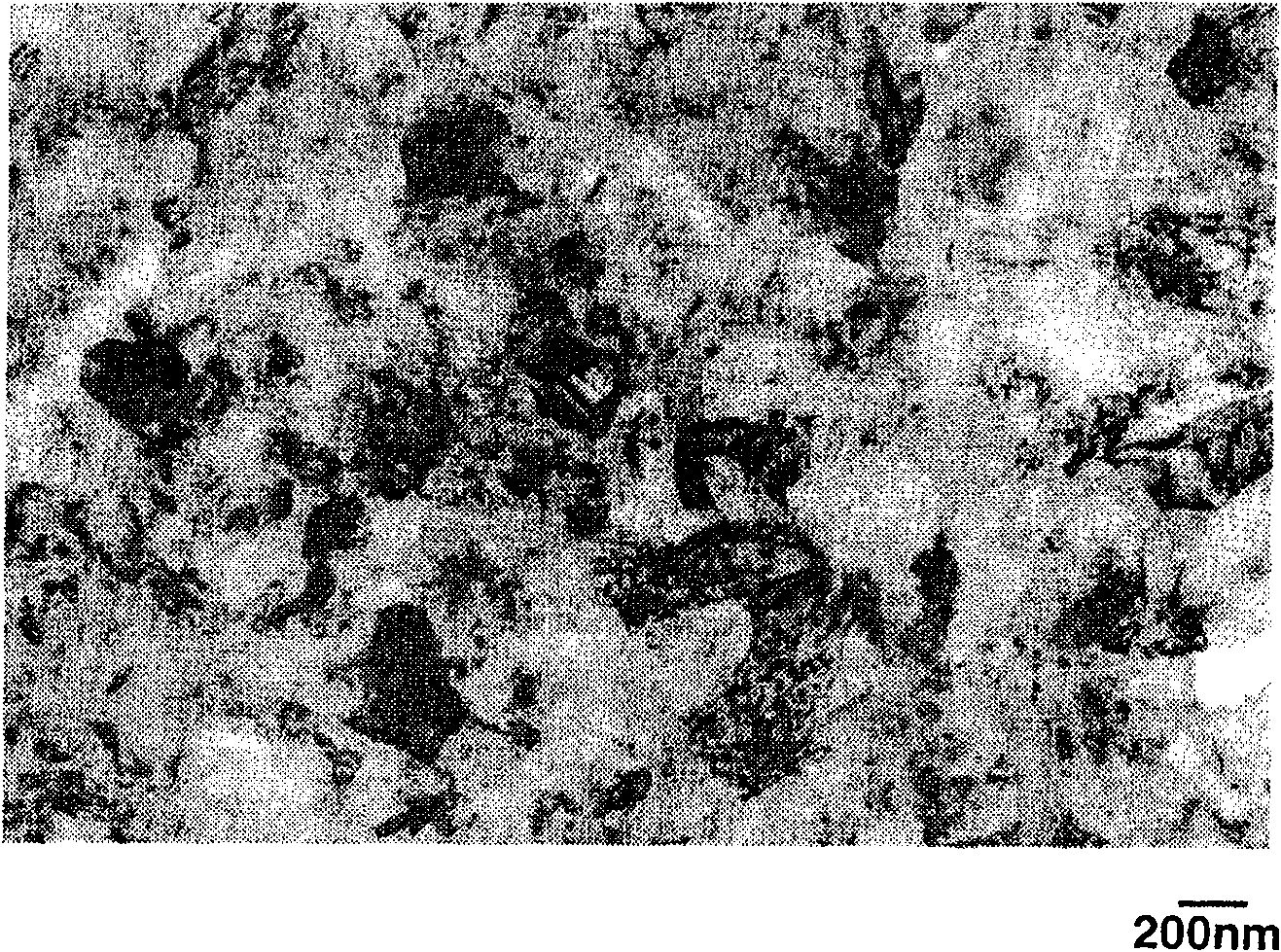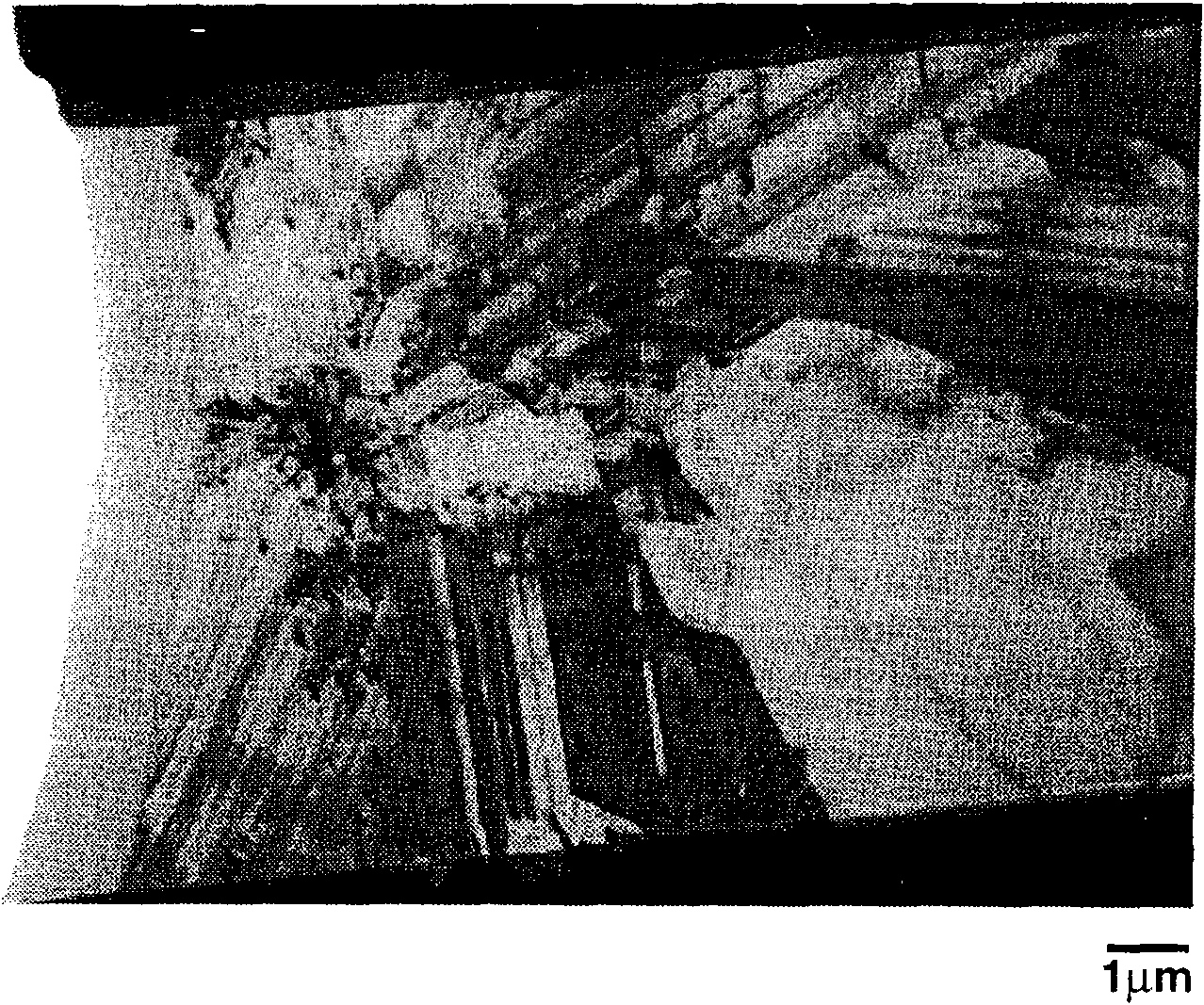Non-aqueous electrolyte secondary battery, negative electrode material, and making method
A non-aqueous electrolyte and secondary battery technology, which is applied in the direction of non-aqueous electrolyte battery electrodes, non-aqueous electrolyte batteries, secondary batteries, etc., can solve the problem of not being able to maintain the volume expansion percentage of silicon oxide, and achieve improved cycle performance, high initial efficiency effect
- Summary
- Abstract
- Description
- Claims
- Application Information
AI Technical Summary
Problems solved by technology
Method used
Image
Examples
Embodiment
[0143] Examples are given below in order to further illustrate the present invention, but they should not be construed as limiting the present invention. In the examples, all percentages (%) are by weight, and the particle size is the median diameter D determined by a particle size distribution instrument using laser diffraction 50 . In the table, silicon oxide, polysilicon, and silicon particles are abbreviated as SiO, p-Si, and Si particles, respectively. The jet mill AFG-100 purchased from Hosokawa Micron Group and the classifier TC-15 purchased from Nisshin Engineering Co., Ltd were used.
[0144] Preparation of silicon oxide particles I-1
[0145] To equimolar amount of silica particles (BET specific surface area = 200m 2 / g) and chemical grade metal silicon particles (BET specific surface area = 4m 2 / g) was heat-treated under a hot vacuum atmosphere of 1350°C and 0.1 Torr to prepare silicon oxide gas, which was deposited on a stainless steel substrate maintained at 1000°C...
example 10-14, Embodiment 1 and comparative example 2
[0191] The mixture of coated silica particles and silicon particles prepared above was diluted with N-methylpyrrolidone. A polyimide resin (solid 18.1%) as a binder was added thereto to form a slurry. The slurry was coated on a 12 μm thick copper foil using a doctor blade with a 50 μm gap, vacuum dried at 200° C. for 2 hours, and pressed at 60° C. by a roller press to form a negative electrode molding. Finally, cut out 2cm from the molded part 2 And used as the negative electrode. The composition of the solid component is shown in Table 4.
[0192] Battery performance measurement
[0193] To confirm the effectiveness of the negative electrode material, the charge / discharge capacity and volume expansion of the material were measured as follows. Six lithium ion secondary batteries were prepared using the molded article as the negative electrode and the lithium foil as the counter electrode. The electrolyte solution is a non-aqueous electrolyte solution of lithium bis(trifluorometh...
Embodiment 10
[0198] The comparison between Example 10 and Reference Example 1 shows that the negative electrode material within the scope of the present invention has a lower volume change multiple after charging, although the capacity and discharge efficiency are comparable. Compared with Comparative Example 2 which does not use silicon particles as the active material, the negative electrode materials of Examples 10-14 have improved charge / discharge efficiency in the first cycle, and improved charge / discharge capacity is observed. The volume change multiple remains basically unchanged, but the charge / discharge capacity is improved.
[0199] Determination of cycle performance
[0200] Using the negative electrode materials of Example 10, Reference Example 1, and Comparative Example 2, negative electrode moldings were prepared through the same procedure as described above. In order to evaluate the cycle performance of the negative electrode molding, a coin-type lithium ion secondary battery ...
PUM
| Property | Measurement | Unit |
|---|---|---|
| size | aaaaa | aaaaa |
| diameter | aaaaa | aaaaa |
| size | aaaaa | aaaaa |
Abstract
Description
Claims
Application Information
 Login to View More
Login to View More - R&D
- Intellectual Property
- Life Sciences
- Materials
- Tech Scout
- Unparalleled Data Quality
- Higher Quality Content
- 60% Fewer Hallucinations
Browse by: Latest US Patents, China's latest patents, Technical Efficacy Thesaurus, Application Domain, Technology Topic, Popular Technical Reports.
© 2025 PatSnap. All rights reserved.Legal|Privacy policy|Modern Slavery Act Transparency Statement|Sitemap|About US| Contact US: help@patsnap.com



